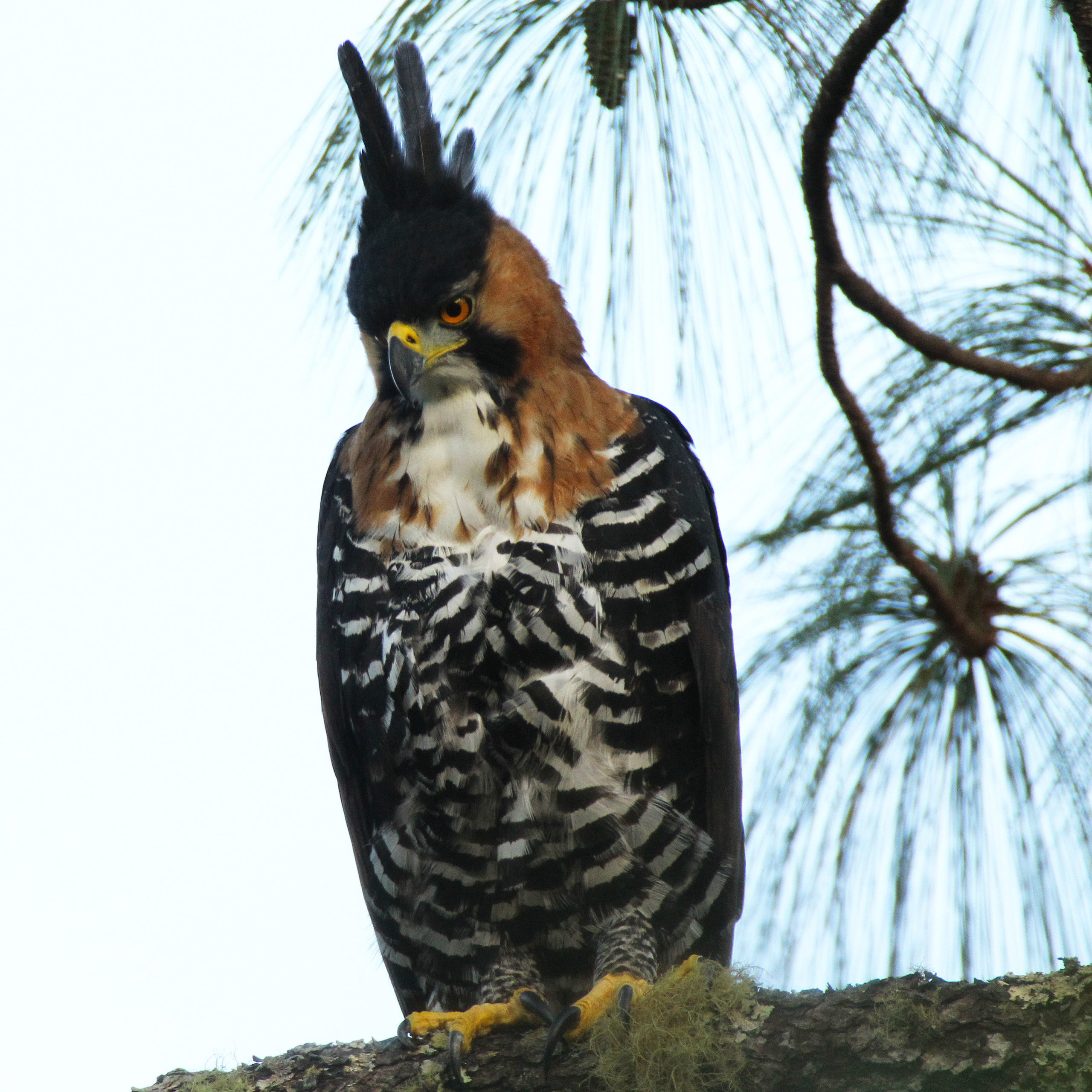Description: The Ornate hawk-eagle has a tall, distinctive, black crest that can be erected when excited. The throat is rimmed with black-tipped feathers and each side of the head and neck is chestnut. They have black upperparts and white underparts barred with black. The flight feathers are marked with white and black bars. The feet and cere are yellow and the eyes are orange. The juvenile has a different appearance. The upperparts are dark brown, with pure white underparts on the head and neck, except for black tips to the crest feathers. The hooked sharp beak and strong yellow feet with long talons make this hawk-eagle a formidable predator.
Size: The Spizaetus ornatus grows to 23-26 inches (58-66 cm) in body length (with the female being approximately 25-40 percent larger than the male); has a wing span of 3-4 feet (0.9-1.2 m) and weighs 2-3.5 pounds (0.9-1.6 kg).
Behavior: Ornate hawk-eagles are beautiful, powerful raptors that hunt by stealth within and below the canopy. They stalk their prey and then attack from a short distance, using their formidable talons with precision. Prey can be taken on the ground, from a tree branch or in flight. The Accipitridae family uses their senses for hunting, particularly sight, which may be up to eight times better than that of humans; most have excellent hearing and a poor sense of smell.
Diet: Their diet consists mainly of medium to large- sized birds, such as guans, little blue herons, parrots, macaws, toucans, chachalacas, small tree-dwelling mammals, and on occasion, some reptiles. They are known to be quite aggressive.
Communication: A clear, thin, high-pitched whistle or scream is heard, along with a call that alternately accelerates with a laughing series of notes and then decelerates with an excited sounding set of notes that rise and fall in small crescendos. It can also utter a cry that sounds like the snarling growl of a large cat.
Reproduction: To prepare for egg laying, a nest made of sticks is built high in the fork of a tree. Courtship begins one to two months before egg laying and includes high pitch screaming calls and soaring through the air together. The male will perform a diving display while the female is perched. Only one egg is laid and incubation time is approximately 48 days. Fledgling (acquiring the feathers necessary for flight) takes approximately 66-93 days. One parent, usually the male, feeds the young while it stays close to the nest for up to one year after fledgling.
Habitat/range: They are found in humid tropical and subtropical forests from Central Mexico to northern Argentina and Paraguay. They are also found on the islands of Trinidad and Tobago, occasionally as high as 8,000-9,000 feet (2,438-2,743 m).
Status: It is listed by IUCN as Near Threatened (NT); CITES Appendix II.



